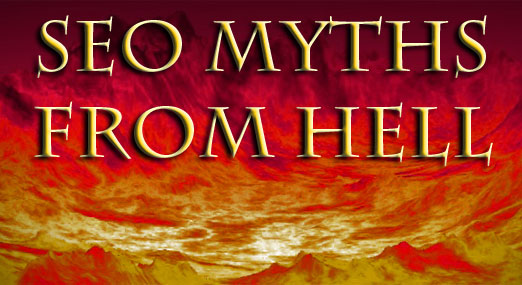There’s a lot of silly advice out there about SEO. A lot of it comes from people who are charging someone for SEO work.
Here are a few mistakes to avoid in promoting your website to page-1 on Google.

- Spend more money on AdWords to increase your organic rank and give you a good reputation at Google.
WRONG. Just plain wrong. - Paste long lists of repeating keywords into your pages – covering every possible keyword variation. Link these back-and-forth with additional pages full of keywords.
WRONG: There are still sites that get away with this, but they are all about getting traffic to drive ad revenue or referral kickbacks. Apparently it works for ‘link pyramid’ schemes which are common in ‘online adult entertainment’, because they don’t rely on Google. It is a very bad idea for real businesses, because real people (real customers) hate reading that sort of crap on a website. - Hide keyword lists in your pages using HTML tricks, matching background & text colour, hidden DIVs, etc.
WRONG: Google is getting smarter all the time and ‘tricky’ SEO can make Google unhappy. When Google is unhappy, suddenly your site plunges down to page 20 in the search results. - Create lots of new websites on new domains, chock-full of links to your site.
WRONG: This is another risky behaviour that can make Google very unhappy. INSTEAD, develop linking opportunities on good, popular, relevant websites run by other real people. Look at local blogs related to your industry, business directories, industry-specific directories, professional associations, accrediting bodies’ websites – plus build your profile, audience and activity on social media sites. - Create a keyword-specific website redirect or ‘doorway page’ pushing traffic to your main site.
WRONG: Google forbids this sort of stuff. Find a trick that works today, and Google might banish you tomorrow. - Add long keyword lists in your HTML keyword meta tags.
WRONG: Google doesn’t even look at keyword metatags. There are some meta tags that are useful, though. - Update your home page every day.
WRONG: Lots of top-ranking pages haven’t been updated for years. (But keeping your content current is always a good idea!) - Flash content ruins SEO.
WRONG: Google is constantly improving it’s ability to index flash content – the flash content just needs to be created by people who know what they are doing. - This list could go on forever with new tricks and scams. Consider this: Even if you manage to trick a search engine – then what? Will Google buy your product? Think about your customers and readers first.
More reading about SEO best-practice
For a longer, more technical lists of SEO myths, try reading 36 More SEO Myths That Won’t Die.
Google is kind enough to give us a detailed guide for ‘white hat’ SEO.
If you’ve read this whole post and you’re not 100% clear what SEO is, or how it is different from PPC or search engine marketing, read “What is the difference between SEO and SEM…?”
